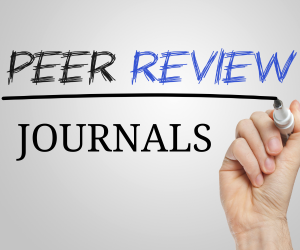A SYNERGISTIC APPROACH TO PRECISION RATING PREDICTION IN RECOMMENDER SYSTEMS USING DEEP LEARNING AND COLLABORATIVE FILTERING
DOI:
https://doi.org/10.48047/HM.V10.I2.2024.2241-226Abstract
In today’s digital world, users mainly rely on online platforms for various activities like shopping, social networking and streaming media. Therefore, recommender systems play crucial role in modern digital platforms as it guides the users by suggesting them content and items relevant to their interest. In this research study, we aim to develop an effective recommender system that accurately predicts unknown item ratings and make recommendations according to user’s interest more precisely by applying collaborating filtering (cf) based techniques on user-item interaction. We applied various cf based techniques including user k-nearest neighbors and item k-nearest neighbors utilizing cosine similarity and pearson correlation and matrix factorization-based methods which are alternating least squares and singular value decomposition. Machine learning methods such as slope-one, baseline and co-clustering as well as deep learning models like neural collaborative filtering, recurrent neural networks and long short-term memory (lstm) networks. For the performance evaluation of these methods and models the metrics used are mean absolute error (mae) and root mean square error (rmse) on two datasets which are book-crossing and recipe reviews. The results indicate that lstm consistently outperforms rest of the applied algorithms by achieving the lowest rmse and mae values 1.06 and 0.31 on book-crossing and 0.44 and 0.37 on recipe-reviews dataset. The empirical analysis shows capability of lstm model to capture complex patterns and long-term dependencies in users’ data. The findings highlight the effectiveness of deep learning models especially lstm in making accurate personalized recommendations greatly which can improve users’ satisfaction and engagement.
Downloads
References
y. Wang, w. Ma, m. Zhang, y. Liu, and s. Ma, “a survey on the fairness of recommender systems,” acm trans. Inf. Syst., vol. 41, no. 3, pp. 1–43, jul. 2023, doi: 10.1145/3547333.
Bilal a, fatima u. Diagnosis and treatment of hepatitis-c in bhalwal: case report. Palliative medicine and care international journal. 2021;4(1):1-3.
J. Lu, d. Wu, m. Mao, w. Wang, and g. Zhang, “recommender system application developments: a survey,” decision support systems, vol. 74, pp. 12–32, jun. 2015, doi: 10.1016/j.dss.2015.03.008.
H. Ko, s. Lee, y. Park, and a. Choi, “a survey of recommendation systems: recommendation models, techniques, and application fields,” electronics, vol. 11, no. 1, p. 141, jan. 2022, doi: 10.3390/electronics11010141.
F. M. Groom and s. S. Jones, eds., artificial intelligence and machine learning for business for non-engineers, 1st ed. Crc press, 2019. Doi: 10.1201/9780367821654.
A. Castrounis, ai for people and business: a framework for better human experiences and business success, first edition. Sebastopol, ca: o’reilly media, inc., 2019.
Bilal a, ahmad s, tanvir f, tariq m, ramzan k, saleem m, saleem hg. Predictive modeling of n-acetyl transferase 2 single nucleotide polymorphisms and breast cancer risk using in-silco approaches. The journal of microbiology and molecular genetics. 2022 aug 31;3(2):105-21.
C. A. Gomez-uribe and n. Hunt, “the netflix recommender system: algorithms, business value, and innovation,” acm trans. Manage. Inf. Syst., vol. 6, no. 4, pp. 1–19, jan. 2016, doi: 10.1145/2843948.
M. M. Talha, h. U. Khan, s. Iqbal, m. Alghobiri, t. Iqbal, and m. Fayyaz, “deep learning in news recommender systems: a comprehensive survey, challenges and future trends,” neurocomputing, vol. 562, p. 126881, dec. 2023, doi: 10.1016/j.neucom.2023.126881.
Jawad m, bilal a, khan s, rizwan m, arshad m. Prevalence and awareness survey of tuberculosis in the suspected population of bajaur agency in fata, pakistan: prevalence and awareness survey of tuberculosis. Pakistan journal of health sciences. 2023 jun 30:56-61.
Q. Ai, v. Azizi, x. Chen, and y. Zhang, “learning heterogeneous knowledge base embeddings for explainable recommendation,” 2018, doi: 10.48550/arxiv.1805.03352.
L. Chen, l. Wu, r. Hong, k. Zhang, and m. Wang, “revisiting graph based collaborative filtering: a linear residual graph convolutional network approach,” 2020, doi: 10.48550/arxiv.2001.10167.
S. Nudrat, h. U. Khan, s. Iqbal, m. M. Talha, f. K. Alarfaj, and n. Almusallam, “users’ rating predictions using collaborating filtering based on users and items similarity measures,” computational intelligence and neuroscience, vol. 2022, pp. 1–13, jul. 2022, doi: 10.1155/2022/2347641.
Y. Wang, y. Liu, and z. Shen, “revisiting item promotion in gnn-based collaborative filtering: a masked targeted topological attack perspective,” 2022, doi: 10.48550/arxiv.2208.09979.
Z. Yang, y. Ge, c. Su, d. Wang, x. Zhao, and y. Ying, “fairness-aware differentially private collaborative filtering,” 2023, doi: 10.48550/arxiv.2303.09527.
D. B. T. Riyadi and z. K. A. Baizal, “collaborative filtering with dimension reduction technique and clustering for e-commerce product,” vol. 7, 2023.
Y. Gulzar, a. A. Alwan, r. M. Abdullah, a. Z. Abualkishik, and m. Oumrani, “oca: ordered clustering-based algorithm for e-commerce recommendation system,” sustainability, vol. 15, no. 4, p. 2947, feb. 2023, doi: 10.3390/su15042947.
Bilal a, nazar i, abbas a, shafiq hr, rafique a, saddiqa a, ali k, ullah mk. Existence, evolution, history and impact of ebola virus disease on humans: a mini review. International journal of environmental chemistry. 2024;10(1):1-5p.
Umm-e-asma fs, shah ma, abbas kj, ramzan h, asif i, nija de, younas e, bilal a. Exploring the relationship between psychological stressors and myocardial infarctions in humans using statistical techniques. African journal biomedical research. 2024; 27(1)
I. Karabila, n. Darraz, a. El-ansari, n. Alami, and m. El mallahi, “enhancing collaborative filtering-based recommender system using sentiment analysis,” future internet, vol. 15, no. 7, p. 235, jul. 2023, doi: 10.3390/fi15070235.
E. Hikmawati, h. Nugroho, and k. Surendro, “improve the quality of recommender systems based on collaborative filtering with missing data imputation,” in proceedings of the 2024 13th international conference on software and computer applications, bali island indonesia: acm, feb. 2024, pp. 75–80. Doi: 10.1145/3651781.3651793.
H. Ying et al., “sequential recommender system based on hierarchical attention networks,” in proceedings of the twenty-seventh international joint conference on artificial intelligence, stockholm, sweden: international joint conferences on artificial intelligence organization, jul. 2018, pp. 3926–3932. Doi: 10.24963/ijcai.2018/546.
Ahmad rz, khan ms, bilal a, ali u, sattar rz. Effect of locus of control and depression among young adults in multan (pakistan). Journal of asian development studies. 2023 dec 30;12(4):684-92.
A. A. Salsabil, e. B. Setiawan, and i. Kurniawan, “content-based filtering movie recommender system using semantic approach with recurrent neural network classification and sgd,” kinetik, pp. 193–202, may 2024, doi: 10.22219/kinetik.v9i2.1940.
J. Wang, k. Ding, l. Hong, h. Liu, and j. Caverlee, “next-item recommendation with sequential hypergraphs,” in proceedings of the 43rd international acm sigir conference on research and development in information retrieval, virtual event china: acm, jul. 2020, pp. 1101–1110. Doi: 10.1145/3397271.3401133.
A. Nurcahya and s. Supriyanto, “content-based recommender system architecture for similar e-commerce products,” jurnal informatika, vol. 14, no. 3, p. 90, sep. 2020, doi: 10.26555/jifo.v14i3.a18511.
M. R. Shahabi, department of communication engineering, university of sistan and baluchestan, m. Rezaei, department of communication engineering, university of sistan and baluchestan, f. Mohanna, and department of communication engineering, university of sistan and baluchestan, “content-based image retrieval for carpet e-commerce application,” ijictr, vol. 13, no. 1, pp. 40–49, mar. 2021, doi: 10.52547/ijict.13.1.40.
T. Wang, y. M. Brovman, and s. Madhvanath, “personalized embedding-based e-commerce recommendations at ebay,” 2021, doi: 10.48550/arxiv.2102.06156.
O. Dogan, “a recommendation system in e-commerce with profit-support fuzzy association rule mining (p-farm),” jtaer, vol. 18, no. 2, pp. 831–847, apr. 2023, doi: 10.3390/jtaer18020043.
I. H. Arsytania, e. B. Setiawan, and i. Kurniawan, “movie recommender system with cascade hybrid filtering using convolutional neural network,” vol. 10, no. 2, 2024.
C. Yin, s. Ding, and j. Wang, “mobile marketing recommendation method based on user location feedback,” hum. Cent. Comput. Inf. Sci., vol. 9, no. 1, p. 14, dec. 2019, doi: 10.1186/s13673-019-0177-6.
C. Ma, l. Ma, y. Zhang, j. Sun, x. Liu, and m. Coates, “memory augmented graph neural networks for sequential recommendation,” 2019, doi: 10.48550/arxiv.1912.11730.
K. Muhammad et al., “fedfast: going beyond average for faster training of federated recommender systems,” in proceedings of the 26th acm sigkdd international conference on knowledge discovery & data mining, virtual event ca usa: acm, aug. 2020, pp. 1234–1242. Doi: 10.1145/3394486.3403176.
C. Udokwu, r. Zimmermann, f. Darbanian, t. Obinwanne, and p. Brandtner, “design and implementation of a product recommendation system with association and clustering algorithms,” procedia computer science, vol. 219, pp. 512–520, 2023, doi: 10.1016/j.procs.2023.01.319.
H. Simsek and m. Yeniad, “building a hybrid recommendation system for e-commerce,” j intell syst appl, pp. 4–7, may 2022, doi: 10.54856/jiswa.202205190.
P. Bellini, l. A. I. Palesi, p. Nesi, and g. Pantaleo, “multi clustering recommendation system for fashion retail,” multimed tools appl, vol. 82, no. 7, pp. 9989–10016, mar. 2023, doi: 10.1007/s11042-021-11837-5.
Downloads
Published
Issue
Section
License

This work is licensed under a Creative Commons Attribution 4.0 International License.
You are free to:
- Share — copy and redistribute the material in any medium or format for any purpose, even commercially.
- Adapt — remix, transform, and build upon the material for any purpose, even commercially.
- The licensor cannot revoke these freedoms as long as you follow the license terms.
Under the following terms:
- Attribution — You must give appropriate credit , provide a link to the license, and indicate if changes were made . You may do so in any reasonable manner, but not in any way that suggests the licensor endorses you or your use.
- No additional restrictions — You may not apply legal terms or technological measures that legally restrict others from doing anything the license permits.
Notices:
You do not have to comply with the license for elements of the material in the public domain or where your use is permitted by an applicable exception or limitation .
No warranties are given. The license may not give you all of the permissions necessary for your intended use. For example, other rights such as publicity, privacy, or moral rights may limit how you use the material.







